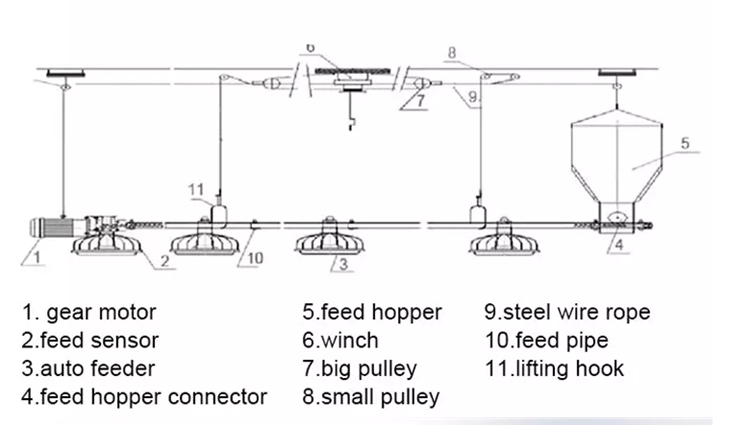Enhancing Indoor Comfort with Innovative Evaporative Cooling Pad Technology for Efficient Air Cooling Solutions
Jul . 28, 2024 05:19 Back to list
Enhancing Indoor Comfort with Innovative Evaporative Cooling Pad Technology for Efficient Air Cooling Solutions
Understanding Evaporative Cooling Pads A Key to Efficient Cooling Systems
Evaporative cooling pads play a crucial role in the realm of cooling technology, particularly in arid climates where traditional air conditioning systems may not be the most efficient option. These pads are integral components of evaporative coolers, also known as swamp coolers, which harness the natural process of evaporation to lower ambient temperatures. This article delves into the functionality, advantages, and considerations surrounding evaporative cooling pads.
How Evaporative Cooling Pads Work
At their core, evaporative cooling pads are designed to absorb water and facilitate its evaporation. When warm air is drawn into the cooler, it passes through these saturated pads. As the moisture from the pads evaporates, it cools the incoming air, which is then circulated throughout the space. This process not only cools the air but also increases humidity levels, making it particularly effective in dry climates.
The pads are typically made from absorbent materials like cellulose, aspen, or synthetic substrates. These materials are engineered to maximize surface area and water retention, thereby enhancing the evaporation process. The efficiency of these pads is often measured by their ability to increase cooling capacity while minimizing water consumption.
Advantages of Evaporative Cooling Pads
One of the primary benefits of using evaporative cooling pads is their energy efficiency. Compared to traditional air conditioning units, evaporative coolers consume significantly less electricity, making them a sustainable choice for many households and businesses. This not only leads to lower energy bills but also reduces the carbon footprint associated with energy production.
evaporative cooling pad

Moreover, evaporative cooling systems are relatively low maintenance. Their design allows for easy replacement of pads, which is typically a straightforward process. With proper care, these systems can provide years of effective cooling without the complex repair and maintenance needs associated with refrigerant-based air conditioners.
Another advantage is the improved air quality provided by evaporative coolers. As the air is cooled, it is also filtered through the pads, removing dust and particulates. The added humidity can also help alleviate issues related to dry air, such as skin irritation and respiratory problems, making these systems particularly beneficial in regions with low humidity.
Considerations and Limitations
While evaporative cooling pads offer numerous benefits, there are some considerations to keep in mind. They are most effective in hot, dry climates where humidity levels are low. In areas with high humidity, the cooling effect diminishes significantly, as the air is already saturated with moisture. Therefore, it is crucial to assess local weather patterns when considering an evaporative cooler for residential or commercial use.
Additionally, the effectiveness of evaporative cooling pads can be impacted by factors such as airflow, pad quality, and water quality. Regular maintenance is essential to ensure optimal performance. This includes cleaning the pads and the cooling system to prevent the buildup of minerals and algae, which can hinder efficiency and lead to unpleasant odors.
Conclusion
Evaporative cooling pads serve as a vital component in energy-efficient cooling systems designed for hot, dry environments. Their ability to cool air through the natural process of evaporation provides an environmentally friendly alternative to conventional air conditioning. Understanding how these pads work, their advantages, and the considerations involved can help consumers make informed decisions regarding their cooling needs. As we move toward a more sustainable future, technologies like evaporative cooling will undoubtedly play an increasingly significant role in providing effective and efficient temperature control.
-
Automatic Feeding Line System-Pan Feeder Nipple Drinker|Anping County Yize Metal Products Co., Ltd.
NewsJul.29,2025
-
Hot Sale 24 & 18 Door Rabbit Cages - Premium Breeding Solutions
NewsJul.25,2025
-
Automatic Feeding Line System Pan Feeder Nipple Drinker - Anping County Yize Metal Products Co., Ltd.
NewsJul.21,2025
-
Automatic Feeding Line System Pan Feeder Nipple Drinker - Anping County Yize Metal Products Co., Ltd.
NewsJul.21,2025
-
Automatic Feeding Line System - Anping Yize | Precision & Nipple
NewsJul.21,2025
-
Automatic Feeding Line System - Anping Yize | Precision & Nipple
NewsJul.21,2025






